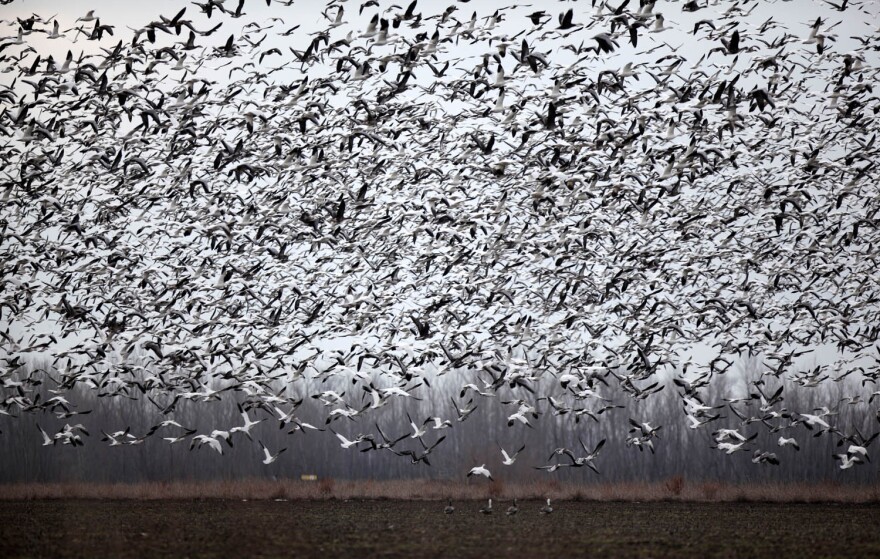On Saturday as many as 50,000 snow geese congregated at Eagle Bluffs Conservation Area, a 4,400-acre wildlife refuge southwest of Columbia.
“I don’t know that we’ve ever had this many that have been around this long,” said Eagle Bluffs area manager Vic Bogosian of the Missouri Department of Conservation.
The geese were waiting out bad weather and gorging on leftover corn. They had been loitering there for about two weeks, and Bogosian figured they would stick around about another week before heading north.
The Missouri Drone Journalism program visited the geese last weekend where thousands were waiting out the weather.
In normal years, snow geese would be heading north as quickly as possible, keeping just south of the continent’s snowline. Their ultimate destination is Canada’s arctic regions. At this time last year, most snow geese had already passed through Missouri, said Andrew Raedeke, a resource scientist with the conservation department.
This winter's weird weather has scrambled their flight plans, Raedeke said. Missouri's winter was unusually mild through February, bringing the geese to the region from southern states like Arkansas, Louisiana and Texas.
And then the snows came. Like tourists stranded on layover, the geese had to postpone their return trip north while tandem snow storms moved through the Midwest.
Despite their name, snow geese prefer to avoid heavy snow. Bogosian said the cold that accompanies snow is rough on their physiology, and the snow itself buries their food supply, which consists largely of roots, grasses and, in agricultural regions, grains.
As the snow cleared and the geese searched for food to prepare for the long haul north, the geese spread out farther than usual across Missouri. Earlier this week snow geese turned up in large numbers near St. Louis.
With snow melting in the Columbia area, corn in the fields of Eagle Bluffs provided a feast for the birds. That’s a big part of why so many camped out this weekend.
Also, the continent’s snow goose population is simply huge. For years wildlife biologists underestimated their numbers. More recent studies have shown just how high goose numbers are, Raedeke said. The abundance of geese is a problem in their arctic nesting grounds, where they cause damage to tundra ecosystems.
Drone Journalism reporter Cade Cleavelin contributed to this article. Sally French and Stuart Palley contributed multimedia.


